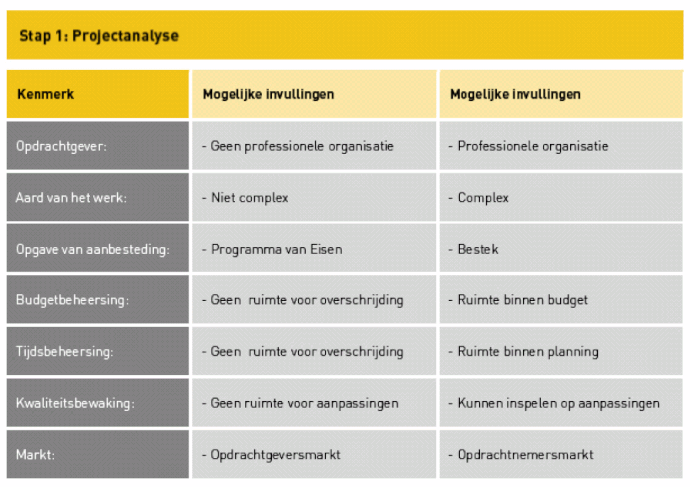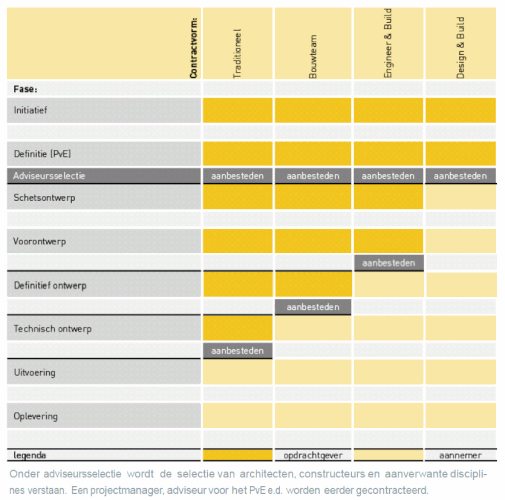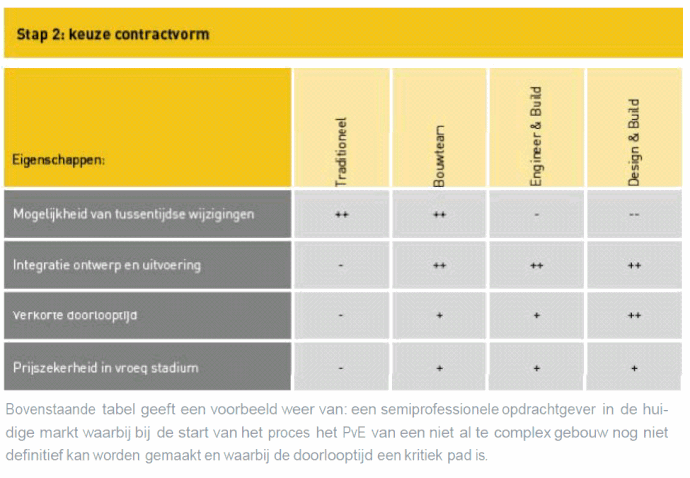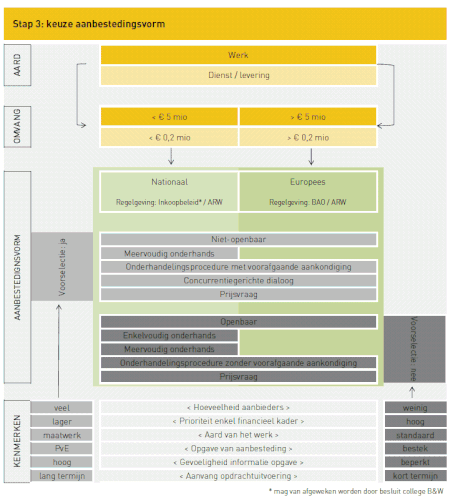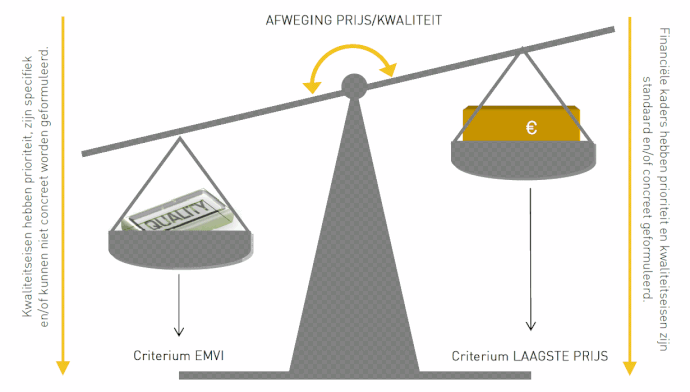Investing in the pretrajectory pays off later
Hiring an architect or advisor (service), buying new office furniture (delivery) or building a new town hall (work): there are many different procedures to place a government assignment on the market. Here the procured service is in principle not free in the choice of procedure when it comes to the posting of an assignment. The procurement is subjected to rules.
However, the freedom that is available within the choice of a procurement is broad. Practice has shown that this freedom is often not correctly used. Examples of procurement procedures where the free choice of a procured service is applied incorrectly, are explained in the box below.
Following trends: applying Design & Build is popular
Project: town hall of which the design brief still needs a lot of adaptions. The chance that the result will be disappointing in the current market is significant. Closing a contract in an earlier phase of the construction process to secure price security at an early stage, could lead to a fake sense of security concerning the price. Every change in the premises during the further development of the design can lead to (significant) greater expenses in design and execution.
Stick to the familiar: procurement policy is the manual
Within a project the architectural plan is framed in such a way that the freedom of movement of the architect is very limited. The framed value of an architectural plan is € 150.000 that according to the relevant procurement policy includes a national (non-)public procurement. A missed opportunity not to deviate from this through the use of a decision of the executive board of municipality. Multiple private procurement would yield a better result: there would be more control on the quality of the architect that the municipality has in mind.
Stick to the familiar: reusing a procurement set
A municipality uses qualification and awarding criteria of an old project for a new project. For this reason the project does not get the correct applicants.
The procurement trajectory often has to be quick and cheap. This is often an important reason why the above-mentioned situation would happen in practice.
In hindsight, these choices have major consequences. Procurement seems so simple, but it is not the procurement procedure that should be leading, but the question that follows the procurement procedure. There is no golden procurement strategy that is suitable for every situation. A meticulous analysis is needed.
Making a good procurement strategy fitting with the project characteristics may cost time and money, but it pays off abundantly later in the trajectory. For the desire to realize for example swimming pools, culture houses, city offices, libraries and broad schools the completion of four simple steps will give you a project fitting strategy.
1. Project analysis
The first step is the mapping of the project characteristics. Broadly speaking there are seven characteristics, displaying in the table below.
2. Choice of contract form
There are many contract models in practice. Here we will limit ourselves to the most common contract forms for “design and execution”. The contract form determines first of all after which phase what procurement(s) should take place.
The second step within the procurement strategy is therefore the choosing of a contract model.
There are four important aspects connected to every contract form that express a degree of suitability per contract form. There should not be the impression that a choice can be made according to fixed patterns. This would be true, if it were not the case that there are outside influences. Therefore, the contract specific characteristics are weighed against the characteristics of the project (step 1) to determine what the most suitable contract model is.
3. Choice of procurement form Initially the nature and size of the assignment needs to be determined. The chosen contract form (step 2) is directly related to this. A Design & Build assignment needs to be procured as Work even though at the same time services are purchased. Determining the value of the assignment needs to be done with precision.
In addition to the legal constraints (threshold values) it is of importance that a procurement form is chosen that fits to the project characteristics and by extension the contract form.
If a national procurement form in accordance to the municipal procurement policy finds no connection to the project characteristics, then a (different) choice can be made through the use of a board decision. The choice of a (different) procedure should be properly substantiated.
The next question is: should it be a procurement with or without preselection. The procured service is free in this choice. Important consideration here are: quantity of providers (market), the desired qpr, the degree to which the assignment has been specified and the available duration time.
4. Determining the criteria that are to be used
Before the chosen procurement procedure can be started the to be used qualification and contract award criteria need to be determined. The best fitting contract award criteria follows directly from the preceding steps.
The actual filling of the criteria again demands a correct analysis of the project characteristics. This final step eventually leads to the being able to select the correct applicants with an optimal application.
This article appeared in the IGG Manual of the built environment 2012 and is placed here with the permission of IGG Bointon de Groot. This article is also available as PDF.
About the authors
Lisa Bloem works for IGG Bointon de Groot and aims herself specifically on economic construction questions. Lisa is specialized in procurement strategies and guides trajectories of multifunctional high-rise up to renovation of town halls She has years of experience with the decentralized government because of i.a. the cooperation with lobbyists. l.bloem[a]igg.nl Danny Bosman, project manager at ABC Management Groep. He is specialized in the guiding process of several procurement forms. In addition, he works on the revitalization or redevelopment of existing real estate. Danny researches the stimulation of durability in existing real estate offices for his MRE study. d.bosman[a]abcmg.nl
